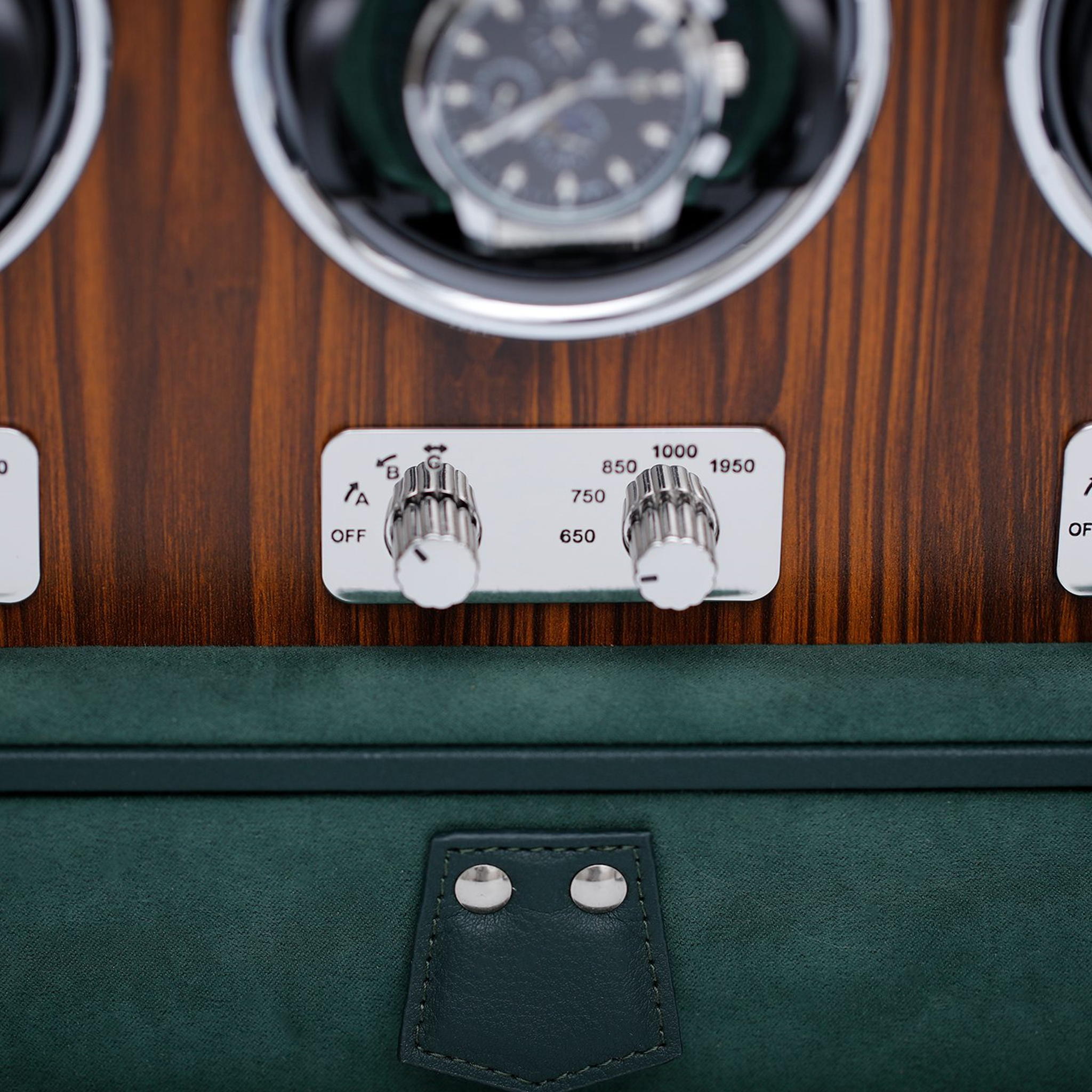How to use a watch winder the right way and what to avoid.
A watch winder isn’t just a tool, it’s part of how you care for and showcase your automatic watches. While some collectors swear by them, others see them as unnecessary. With so many opinions floating around online, it can be hard to know what’s true and what’s just noise.
Let’s clear that up.
A watch winder is only useful for automatic watches, not quartz, not manual-wind pieces. Automatic watches are powered by movement, so if you rotate between multiple watches and leave them unused for days, they will stop. A winder keeps them running by gently rotating them in intervals, simulating natural wrist movement.
Now, if you wear one automatic watch every day, and only take it off to sleep or shower, a winder isn’t really essential. But if your watch has complications like a moonphase, perpetual calendar, or annual calendar, a winder becomes very helpful. These watches are time-consuming to reset, and that's where a winder becomes a major convenience.
Some collectors believe that winders help prolong the life of your watch by keeping its internal oils circulating. Others worry they may cause extra wear if used incorrectly. Here's the truth: modern automatic watches use synthetic lubricants, which don’t coagulate like older oils did. Instead, they evaporate slowly over time, whether the watch is running or not.
That means the most important thing is still regular servicing, every 4 to 6 years, or based on your brand’s recommendation. A winder doesn’t replace this. But it does make ownership easier and helps reduce unnecessary handling of delicate parts like the crown, which can wear down over time.
One big myth? That a winder can overwind your watch. That’s not true. Modern automatic watches have a built-in slipping bridle, a mechanism that prevents the mainspring from being overwound. However, if your winder is spinning too often without proper settings, it could engage the bridle too much and wear it down over time.
That’s why it’s important to choose a programmable winder and match it to your watch’s movement. Some watches wind in both directions, others only clockwise. And every movement has an ideal number of rotations per day (TPD). You can usually find this info through your brand or movement manufacturer.
Used properly, a winder won’t fully charge the watch’s power reserve, and it shouldn’t. It’s designed to maintain energy, not max it out. Some collectors even recommend letting your watch rest for a day before placing it on a winder to preserve the bridle’s lifespan.
There’s also the matter of screw-down crowns. For watches with this design, winding manually can put stress on fragile threads. Constantly opening and closing the crown increases wear. A winder removes the need for frequent manual winding, and helps protect one of the most sensitive parts of your watch.
So should you use a winder? If you collect multiple automatics, especially complicated ones, it’s a yes. If you want your watches ready to wear, always accurate, and safely displayed, it’s a yes. Just don’t forget to use it the right way, with correct settings, a good rest interval, and consistent servicing.
At the end of the day, your watches aren’t meant to sit in a drawer, unworn. But they’re also not meant to spin 24/7.
With the right winder and the right balance, you get both convenience and care.






